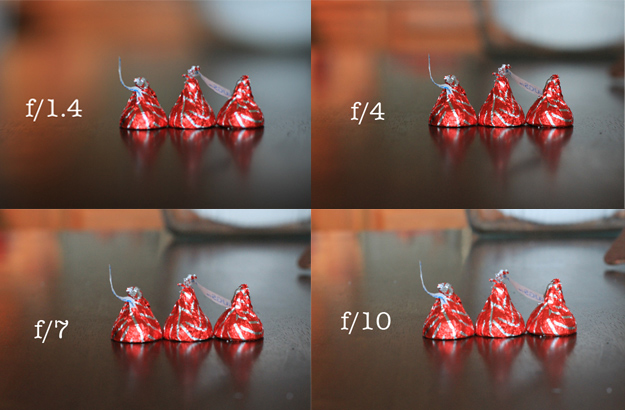What is Depth of Field?
As a beginner photographer, one of the first terms you’ll hear tossed around on many forums is “depth of field” or “DOF”. Once you become familiar with DOF, you can really add visually appealing enhancements to your images.
The definition of depth of field is basically the area of acceptable sharpness within an image that will appear in focus in the final result. There is an area both in front of and behind your subject that will be out of focus. Your aperture settings, distance from subject, and focal length of your lens all play a part in the depth of field.
Shallow Depth of Field Examples
Some images will have a “shallow depth of field”, meaning the area that is sharp and in focus is rather small, leaving a majority of the image out of focus.
Here are a few examples with what is considered in photography to be a shallow depth of field:


In the images above you can see that our subjects are the only thing sharp and in focus. The background is completely blurred out and out of focus. This is because they have a small or shallow depth of field.
You could go in, and with a little Photoshop magic, create a fake shallow depth of field by adding blur to parts of the image, but it is much more beneficial to learn how to do this in camera.

This image also has a shallow DOF. The subject and the area of the ground just in front of her is sharp and in focus, however, the foreground and background are out of focus.
Deep Depth of Field Examples
Images with a deeper DOF have much more, if not all, of the image sharp and in focus. Larger/deeper depths of field work particularly well for large groups, landscapes, or just any image that you need a large majority of both the subject/object and foreground/background sharp.
Here are a couple of examples of images with a much larger zone of focus and sharpness:
How Does Aperture Affect Depth of Field?
Aperture refers to the amount of light let in through the “hole” at the opening of your lens. You can adjust the size of this by changing your f/stop (aperture) settings.
This is the easiest way to control your depth of field when preparing to take your shot. Because not only does it affect the amount of light you let in, it also affects the size of the area of your plane of focus.
This image shows how different f/stops can affect your shots:

As you can see, the smaller your f/stop number, the smaller (more shallow) your depth of field with be. Shooting at very low numbers will result in a lot of your image being out of focus. Shooting with higher f/stop numbers will result in a majority (if not all) of your image being sharp and in focus.
How Does Focal Length and Distance From Subject Affect Depth of Field?
The closer your subject is to your lens, the more shallow your depth of field will be. This is because, if very close to you, your subject will automatically be taking up a majority of the image and being in the focal plane.
Increasing your focal length of your lens also gives you a more shallow depth of field. So even if your subject isn’t necessarily super close to you, shooting at a longer focal length, such as 200m, will give you a smaller depth of field.
There are apps and online depth of field calculators that you can use to calculate your DOF. The result is primarily based on your f/stop number, distance from subject, and focal length of your lens. It is helpful to use a depth of field to calculator just to punch in different combinations of numbers to help you become familiar with how it changes the amount depth of field.
As always, the best way to learn how depth of field works is to just get out your camera and PRACTICE! Play around with different settings and move your subject closer and farther away from camera and note the different results.
Leaning depth of field can really help you take your images to a different level and leave you with impressive and more visually appealing results.


